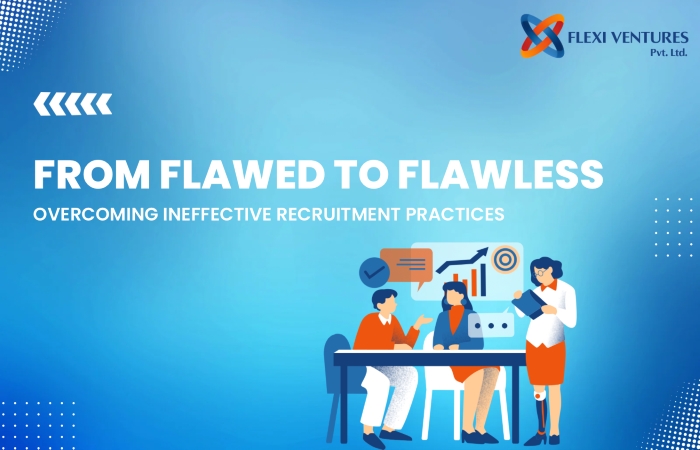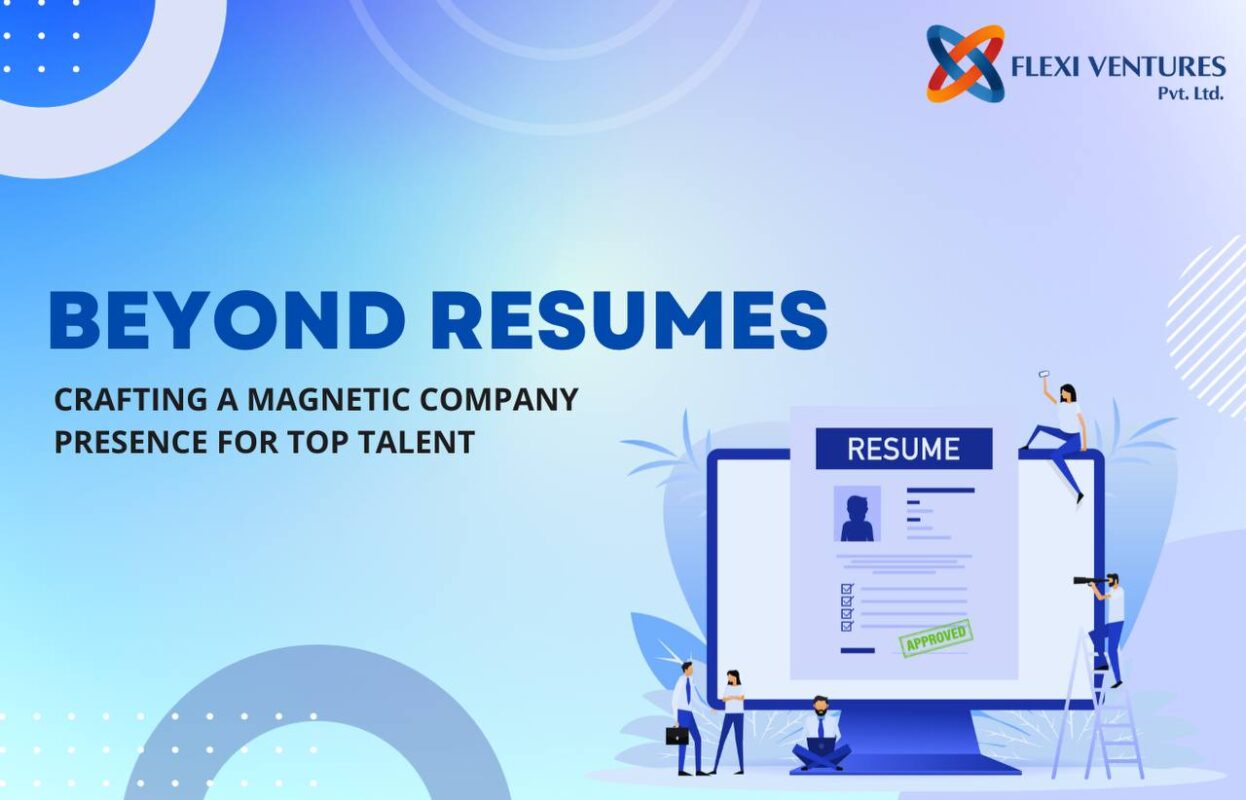The Significance of Recruitment on Organizational Success
Recruitment is one of the crucial elements in the quest for business success. Companies are defined by the quality of their people and an ineffective recruitment process can prove detrimental to the company’s performance and image. A sound recruitment policy helps bring the right talent to your company that will decide its long-term success or failure. The adage “Well begun is half done” holds true in this scenario as the right talent forms the basis of any company set-up.
Through this blog, we will try to appreciate that the right people can be brought in only with the right recruitment strategy. We will also understand the not so effective recruitment practices that are present in the market which can negatively impact your business.
Identifying Ineffective Recruitment Practices:
Some of the reasons why recruitment practices remain ineffective are:
Overemphasis on Traditional Channels
Reliance on traditional recruitment approaches for sourcing candidates can be very limiting. Traditional channels including job boards, newspaper advertisements, and referrals don’t give you the kind of reach that modern digital channels can and you could easily miss the right candidates. It’s important to explore these digital platforms and social networks which are often the preferred means for young and bright jobseekers.
Lack of a well-defined recruitment strategy
Inefficiencies and missed opportunities-these are the banes of not having a clear and structured plan for recruitment. In the absence of a proper strategy, the recruitment process may become chaotic and time-consuming. HR teams may spend excessive time and resources without getting the desired results. You could be staring at inconsistent and incorrect hiring decisions which may also impact the candidates in the form of forgettable experiences that may devalue the image of the company as well as cause delays and missed opportunities in attracting the top talent.
Ignoring Employer Branding and Candidate Experience
When the recruitment practices employed by the company are not effective then it can ruin critical aspects of employer branding and candidate experience. A strong brand presence will attract top talent and an invisible one will prove detrimental to the company looking to hire top talent. You may miss opportunities or end up hiring ordinary candidates who dont make an impact.
Focusing on building your brand as an employer who cares about its people and by promoting your company’s culture, values, and achievements will create the right connection for the right kind of candidates. This is tied in with the recruitment experience candidates experience when they are in the process of being considered for the job. This is an experience they take home with them and a good one will likely make them consider joining your team or come back for future openings.
The Consequences of Ineffective Recruitment
Impact on talent acquisition
The purpose of a useful hiring process is to find candidates that are a perfect fit for the role or position being advertised. When the recruitment itself lacks structure, it can lead to the hiring of less appropriate people, which may then lead to low outputs, high attrition, bad company image and similar issues. The other consequences could be a diminished ability to attract and secure top-tier candidates. These issues together with delays, missed opportunities, and poor candidate experiences, will cause potential talent to look elsewhere.
Financial implications for the organization
Everything from advertising to hiring and training comes at a cost to the company. When the hiring process is not streamlined, then it will put a strain on the budget of the company. It often increases costs related to turnover, recruitment, training, and lost productivity. Such candidates may not perform as expected, forcing re-hiring or replacements, added cost on training and so on, all of which impact the organization’s bottom line negatively.
Negative effects on company culture and morale
Company culture and employee morale are high when people are in a happy shared envirment with the right set of people. When the hiring process results in poor-fit candidates, they may disrupt the harmony within the organization. Older employees may become demotivated or frustrated in such situations with such colleagues who do not perform to potential, adding additional pressure on them.
Yet another problem with ineffective procedures may lead to higher attrition rates, negatively impacting the image and financial health of the company. These problems can reduce trust in leadership and HR, making employees question the organization’s decision-making abilities. It also disturbs the overall engagement of the workforce.
Strategies for Overcoming Ineffective Recruitment Practices
Embracing a holistic recruitment strategy
Embracing a holistic recruitment strategy involves considering all aspects of talent acquisition and employing means that prove as effective as possible. From sourcing and selection to onboarding and retention, the focus is to align efforts to attract, hire, and retain top talent in a quest to promote company success. In addition to the proven traditional techniques, it is an excellent idea to use digital platforms, social media, and job boards to reach a wider and more diverse talent pool.
You can improve the efficiency of the hiring process using modern software systems such as Applicant Tracking Systems (ATS) and AI-powered tools. These not only streamline the screening and selection process but will help you sift through resumes, assess candidate qualifications, and even conduct initial interviews, saving time and resources while improving the quality of hires.
Building a strong employer brand
Becoming an employer of choice demands an effective hiring process which works towards shaping and promoting the company’s image in the right manner.
Employer branding can help attract the right candidates whose goals and values resonate with the company culture. Highlighting the careers page, writing compelling job descriptions, engaging present empoyees, starting blogs on various social media can also help build a very strong presence and define your company culture. It’s also a great idea to highlight your organization’s values, mission, and work environment with the use of social media and content marketing. Keeping the hiring organised, seamless and precise can improve the perception of the company making people want to work with you. Read more
Investing in the candidate experience
Experience of the hiring process defines the company image for many job seekers who are constantly analysing and judging prospective employers. Ineffective and haphazard hiring can lead to losing out on top talent and damaging your employer status through word-of-mouth or online reviews.
A well-structured, speedy hiring process respects candidates’ time and enhances their overall experience. Having a standardized process also helps assess candidates objectively and removes bias. Defining the job requirements appropriately will ensure you and the candidates save time and effort from the start. This together with pre-screening methods, such as resume reviews or brief phone interviews, hasten the process.
A responsive interview process encompasses keeping the candidates totally engaged and updated throughout their recruitment journey. This can be done using a single point of contact to address queries and concerns. It’s imperative to offer personalised and constructive feedback after interviews or assessments. In case of rejections, an honest communication about the reasons will allow candidates to improve in future.
The Role of Technology in Modern Recruitment
Utilizing AI and data analytics can help make better decisions. AI-driven tools can analyze resumes, predict candidate success, and even automate initial screening in a quick and objective manner. Data analytics also does a whole lot more, it can identify trends, optimize sourcing strategies, and measure the effectiveness of recruitment campaigns, leading to more data-driven and informed hiring decisions.
Applicant Tracking Systems (ATS) also help streamline the recruitment process. These systems are built to manage candidate data, automate routine administrative tasks, and ensure compliance with hiring regulations. ATS systems also aid in better job posts, resume screening, and interview scheduling, for a more organized and streamlined recruitment process, reducing time-to-fill, and enhancing the overall candidate experience.
Training and Development for Recruitment Teams
Recruitment departments need continuous learning and development to stay abreast of industry trends, related technology, legal requirements, interviewing techniques and skills. A knowlegdeble recruitment team is able to make the process more effective and get the desired results. It also plays a role in understanding ethics and how this can get people to trust your process and be willing to engage with your company. Encouraging certifications and promoting an open culture of feedback and improvement will ensure the ongoing growth of the recruitment teams.
Staying up-to-date about industry trends and best practices gives them the competitive edge as they can adopt the latest strategies, technologies, and methodologies, improving their positioning as attractive destinations for top-tier talent. Staying current with industry trends also makes teams aware of changing employment laws and regulations, and makes compliance easy. Trends also give valuable insights that allow hiring staff to understand and minimise employee turnover and safeguard the company’s investment in its workforce.
Measuring and Improving Recruitment Success
It’s important for recruiters to measure their own performance and set processes in place for improvements. Recruitment teams can benefit by setting Key Performance Indicators (KPIs) as the means of assessing recruitment performance. Parameters such as Time-to-Fill, Cost-per-Hire, Quality of Hire, Source of Hire, Offer Acceptance Rate are used to verify the success of the recruitment process.
KPIs can be used to measure and improve recruitment success by defining clear metrics, collecting and tracking data consistently, and analyzing results regularly. You can set specific targets aligned with the company goals to identify strengths and areas for improvement in the talent acquisition processes. Continuous improvement efforts should include gathering feedback, training, and changes following KPI insights.
Conclusion
Effective recruitment helps you onboard the best of the best that will take your business forward in the right manner. The correct recruitment approach comes with many advantages such as a reduced turnover, better team performance, higher goal achievement and a clear edge over the competition. When the process is not efficient enough, it can result in costly turnover, conflicts, legal risks, lack of reputation and misalaligned skills that can interfere with strategic goals.









